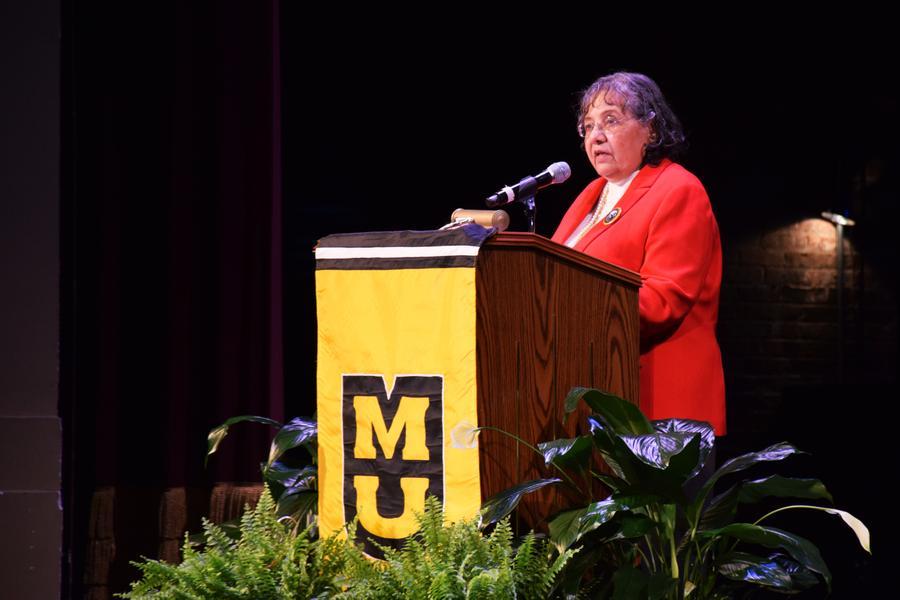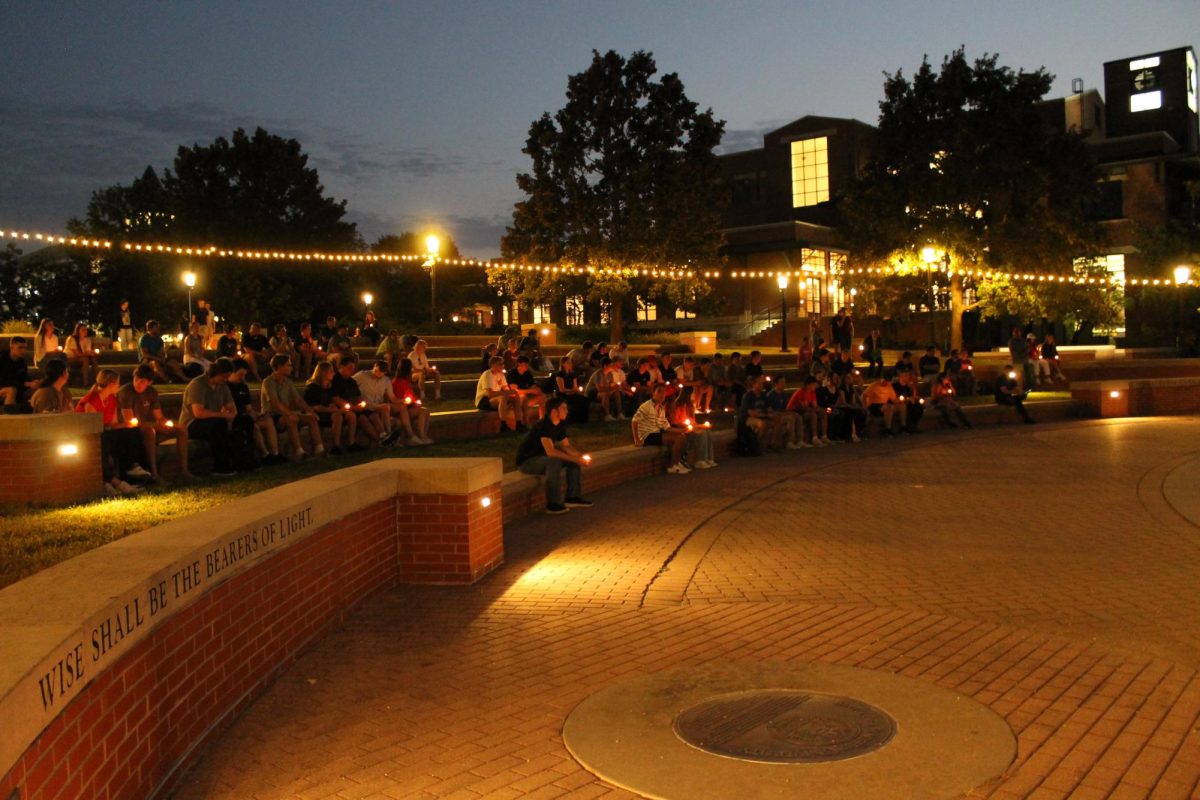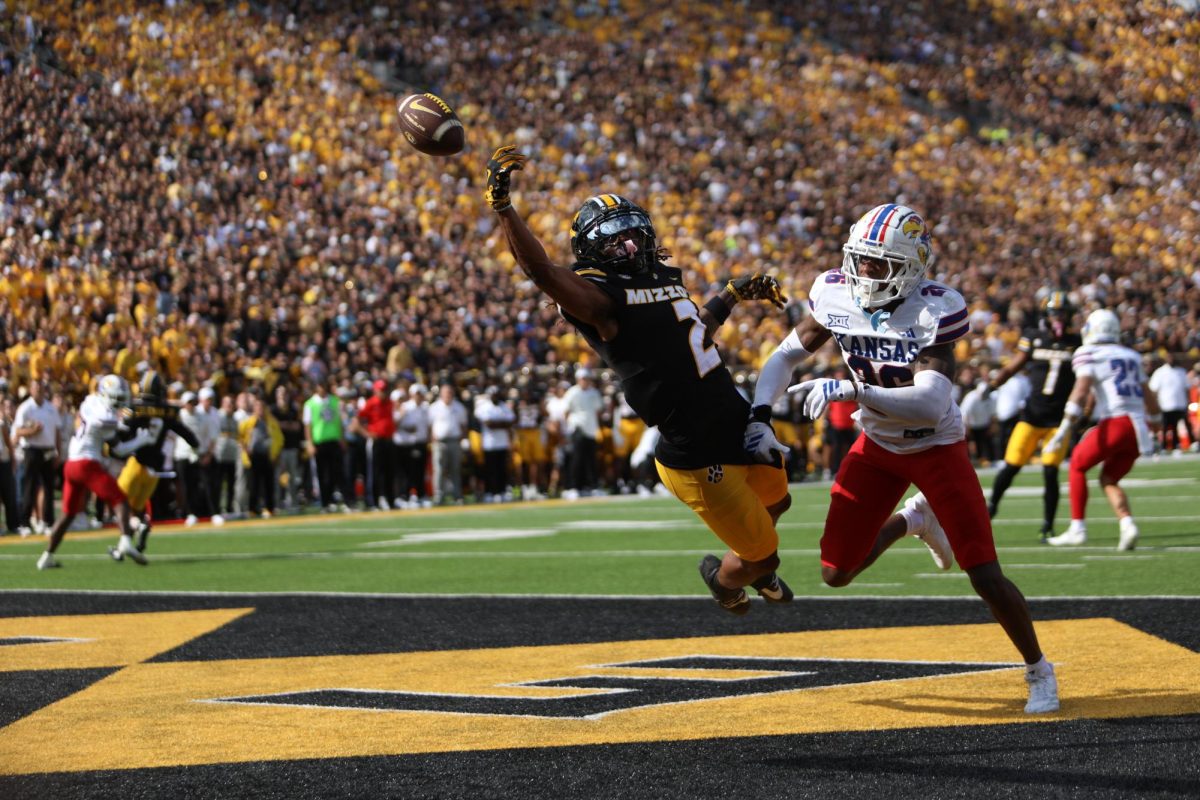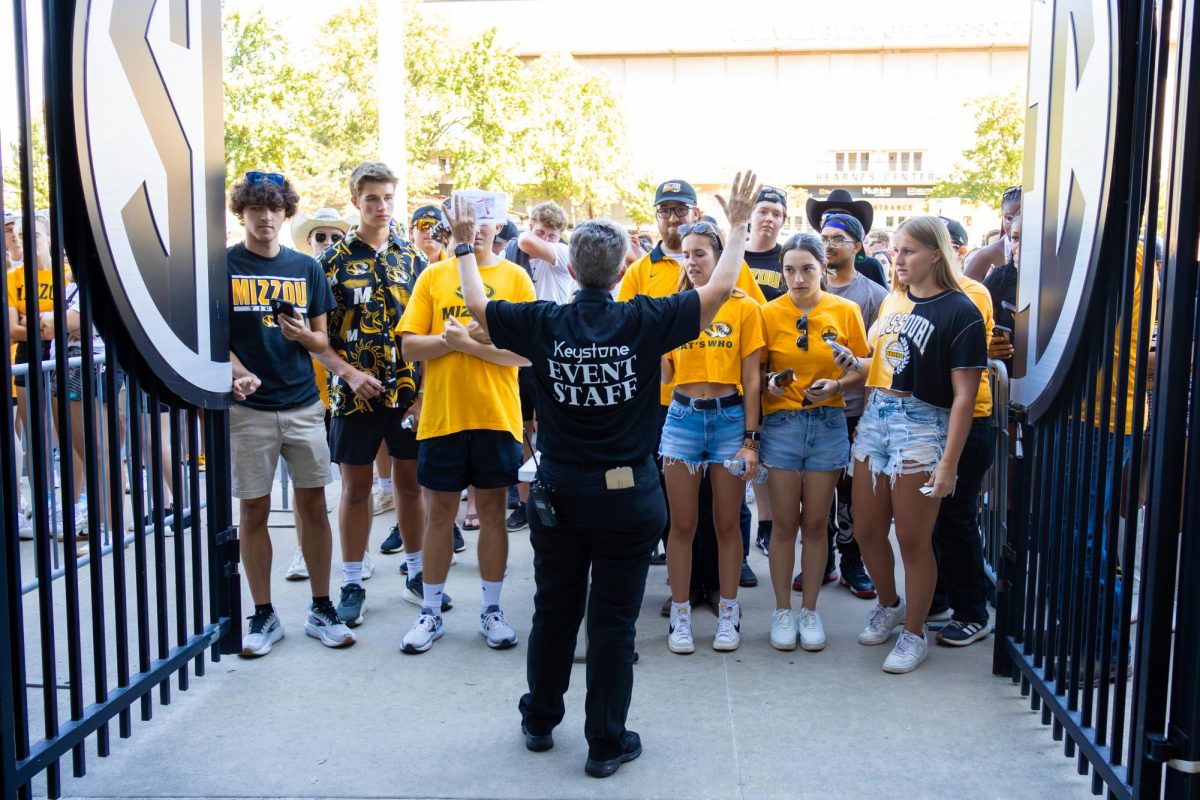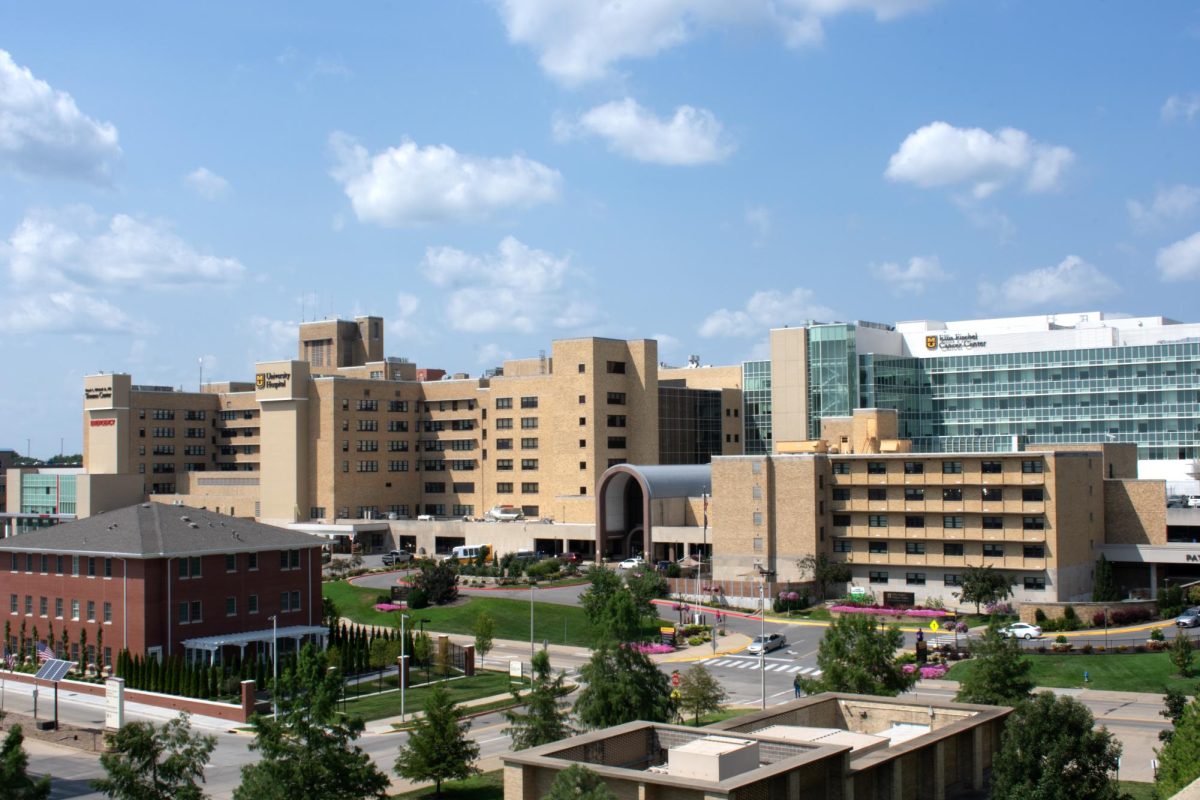Even before Diane Nash walked on stage in the Missouri Theatre on Jan. 20, she received a standing ovation. In honor of Martin Luther King Jr. Day, Nash was invited to give a speech about her life as an activist during the Civil Rights era.
Nash’s speech focused on her experiences leading nonviolent civil rights campaigns throughout the 1960s.
Senior Kaiya Brown, who has been coming to the Martin Luther King Jr. Day lectures for four years, said this past semester at MU was historic, though many students might not realize it. Brown believes Nash’s speech is relevant to what’s going on now.
Last semester, protests led by multiple student organizations such as Concerned Student 1950 culminated in national media coverage and the resignations of UM System President Tim Wolfe and Chancellor R. Bowen Loftin.
Addressing some of the problems concerning our university system, Nash offered her support to the students by emphasizing the importance of facing challenges in everyday life.
“When I’ve had decisions to make, I’ve always tried to make the decision that would make me admire the person I see in the mirror,” Nash said. “Every individual and every generation has challenges and I hope they step up and accept the challenge.”
Graduate student Khalilah Henderson agrees with Nash’s call for action.
“We are the change and we have to step out and do something,” Henderson said.
Nash credits a nonviolent method of fighting for civil rights for her many accomplishments.
“Nonviolence is one of very few effective methods of struggle available today to people who want to make social change,” she said.
Nash first began to get involved in activist work as a student at Fisk University in 1959. In 1960, she led a student sit-in in Nashville and was a founding member of the Student Nonviolent Coordinating Committee.
The next year, she helped coordinate the Freedom Ride from Birmingham, Alabama, to Jackson, Mississippi. Nash was an influential instructor in teaching new generations the basics of a nonviolent campaign, but she was imprisoned in 1961 for her teachings. She has won many awards for her work in the civil rights movement, including the Distinguished American Award presented by the John F. Kennedy Library.
Nash and her companions looked to Mahatma Gandhi’s teachings of nonviolent warfare to combat issues in society.
“What Gandhi invented was a way of waging war without weapons of violence,” she said.
However, they were often dissatisfied with the word “nonviolence” to describe their civil rights movement. The word in itself has a negative connotation, and the group did not want to align themselves with negativity, Nash said.
Nash eventually decided on “agapic energy” as the new name of their movement. Agapic energy comes from the combination of the Greek word agape, which means brotherly love or love for humankind, and energy, or a power or force. Therefore, agapic energy is “the power produced by love of humankind.”
“It is not just the absence of violence; it is the use of a power,” Nash said. “It is not passive; it is active. Users of agapic energy are not pacifists; we are activists.”
Agapic energy can be further explained by two basic principles. The first principle is “people are never your enemy.” Nash urges campaigners to love and respect people as humans while attacking their prejudiced attitudes.
Nash gave an example of this first principle by her experience desegregating lunch counters in the 1960s. For two years, her team targeted six different lunch counters per year. In the second year of their project, one of the managers from the first year visited all the owners and managers of the new lunch counters and urged them to desegregate their counters because they would not lose profits.
In this case, Nash said: “It was not the person that was the enemy. It was the racism.”
The second principle Nash explained was “oppression always requires the cooperation of the oppressed.” When the oppressed opt out of an oppressive system, the system will dismantle, she said.
For the Montgomery bus boycott, Nash pointed out that in order for there to be segregated buses, black passengers had to segregate themselves by sitting in the back of the bus.
“The day the blacks decided there would be no segregated buses in Montgomery, there were no longer segregated buses in Montgomery,” Nash said.
Nash’s campaign has constantly been looking toward the future, and she encouraged students to do the same.
“We were trying to bring about the best society we could for (this generation) to be born into and come of age into,” Nash said. “Future generations are going to look to you to do the same.”


